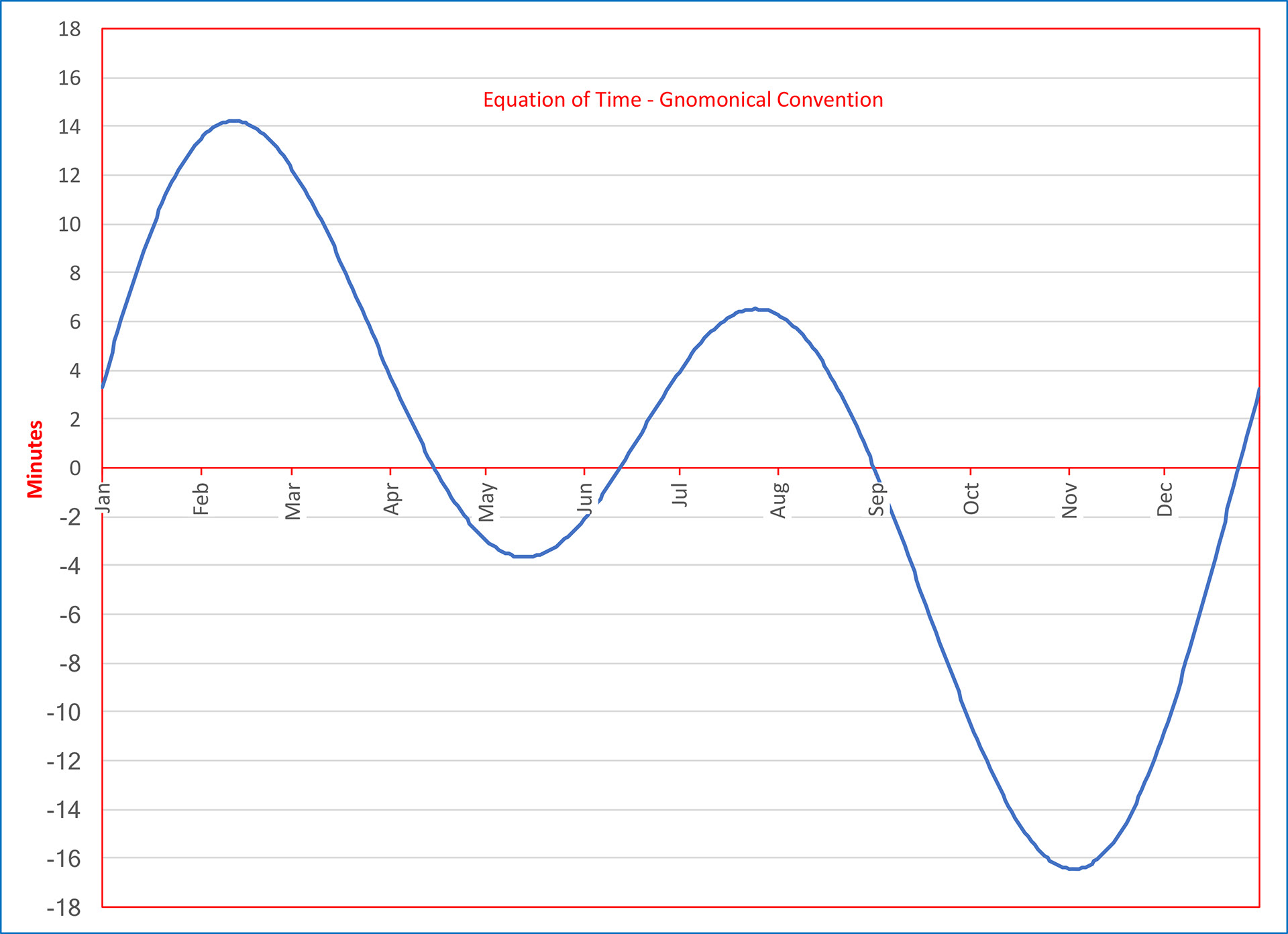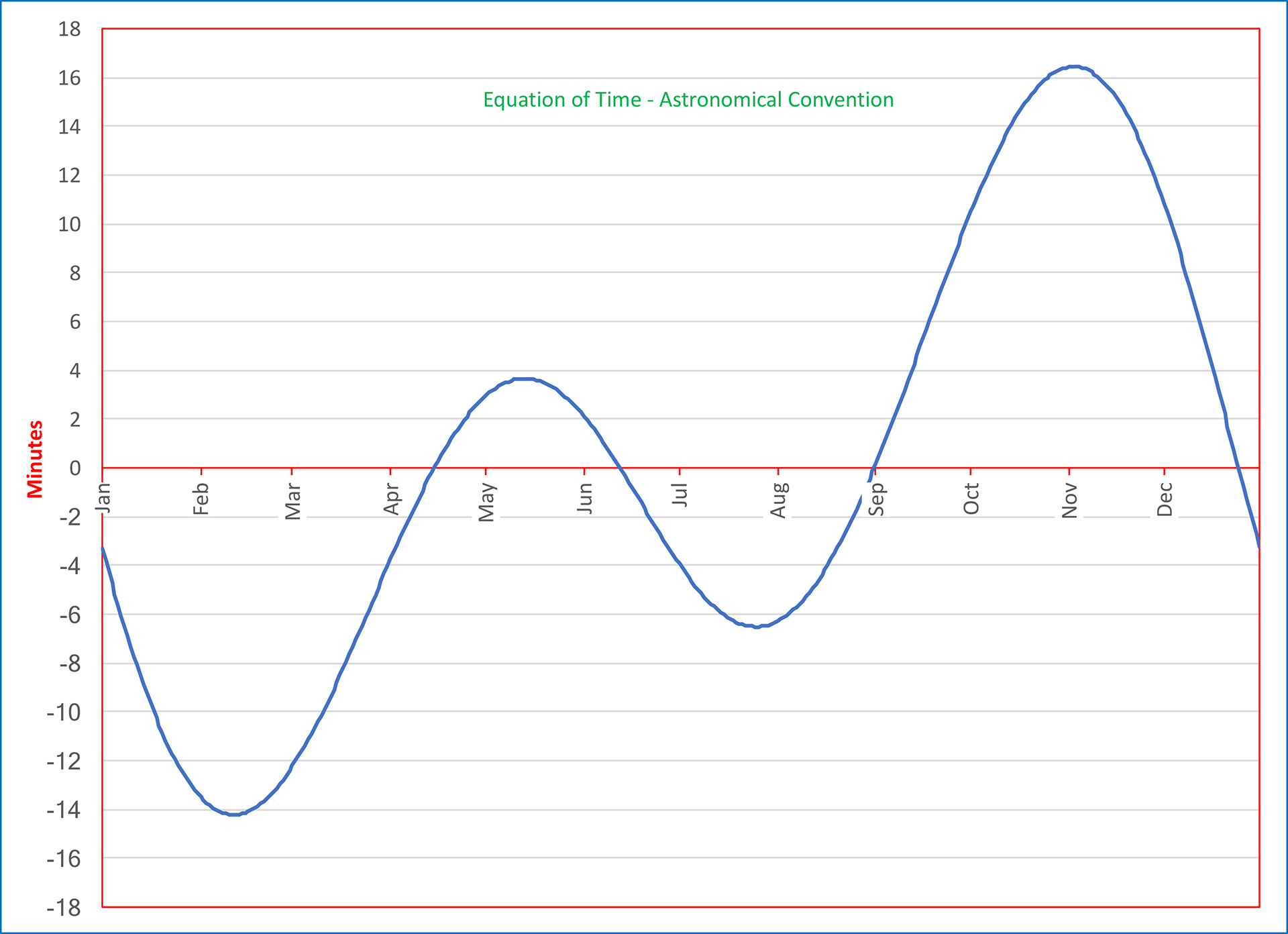Even when a sundial has been correctly engraved and correctly installed, it seldom seems to tell the same time as one's watch. The sundial tells Local Solar Time. The watch tells Civil Time, which is related to the world's legal standard of Universal Time Coordinated (UTC).
The two time scales are different..
The difference between watch and sundial comes from 2 easily-calculated locally-constant human-made factors and 2 more complex and variable astronomical factors
1 : The difference between one's Longitude and that of the Time Zone meridian.
2. The presence or absence of Summer Time or Daylight Saving Hours.
3. The Ellipticity of the Earth's orbit around the Sun.
4. The Obliquity of the Earth's spinning in relation to the Equatorial plane.
The combined effect of the last two factors is called the Equation of Time.
FORMAL DEFINITIONS and CAVEAT
Astronomical Definition
From 1965, the Equation of Time is formally defined as:
The correction to be applied to 12hrs + Universal Time to obtain the Greenwich Hour Angle of the Sun or more generally the correction to be applied 12hrs + Local Mean Time to be obtain the Local Hour Angle of the Sun. It is so tabulated in the almanacs for navigators and surveyors.
Explanatory Supplement to the Astronomical Ephemeris & the American Ephemeris and Nautical Almanac
Or more recently:
the difference apparent solar time minus mean solar time
The Astronomical Almanac
Note that the latter definition relates to mean solar time, which is broadly local standard time +/- the longitudinal difference mention above
Gnomonical Definition
While Astronomers use the definition above, almost all Gnomonists - and formalised by Commission des Cadrans Solaires ; Société Astronomique de France - use the negative. That is to say the correction to be applied to Solar Time (i.e. the Local Hour Angle of the Sun) to obtain Local Mean Time.
Beware the Difference
Some computer applications use one definition and some the other. Some of the charts on this website use one definition and some the other!


The Equation of Time Left: Gnomonical Convention Right: Astronomical Convention
Marg Folkard's cast-bronze Dial on Mount Annan, Sydney. It has an Equation of Time Correction Graph included in the casting. It uses the Gnomonical Convention
THE NAME
The Equation of Time or in its original form - Æquātiō Diērum - is common astronomical terminology. The 'Equation of .... xxx' means the difference between the observed value of xxx and its mean value. In astronomy, there are many examples e.g. the equation of time, the equation of centre, the equation of the equinoxes, the equation of origins, the equation of light.
In mediaeval times, Æquātiō Diērum or 'Equation of the Day' was used. Clocks were not accurate enough to differentiate between minutes. Only astronomers predicting lunar movements were concerned with the fact that the length of the solar day varies throughout the year, as discovered by Ptolemy in the 2nd C CE. (see the section on Ptolemy's invention - left).
Thanks
To the many, many people who have helped improve, correct, add to and comment on this website
APOLOGY
I have been collecting pictures of sundials for years and years. In many cases, I do not know who owns the image. if I have a photo that is yours, I ask your permission to show it and will acknowledge you. If you want me to remove the image, I will do so.
This image was drawn by the my father, when I was about 6 years old. I had complained that the sundial in the Rectory Garden never seemed to give the same time as his watch or his Church clock